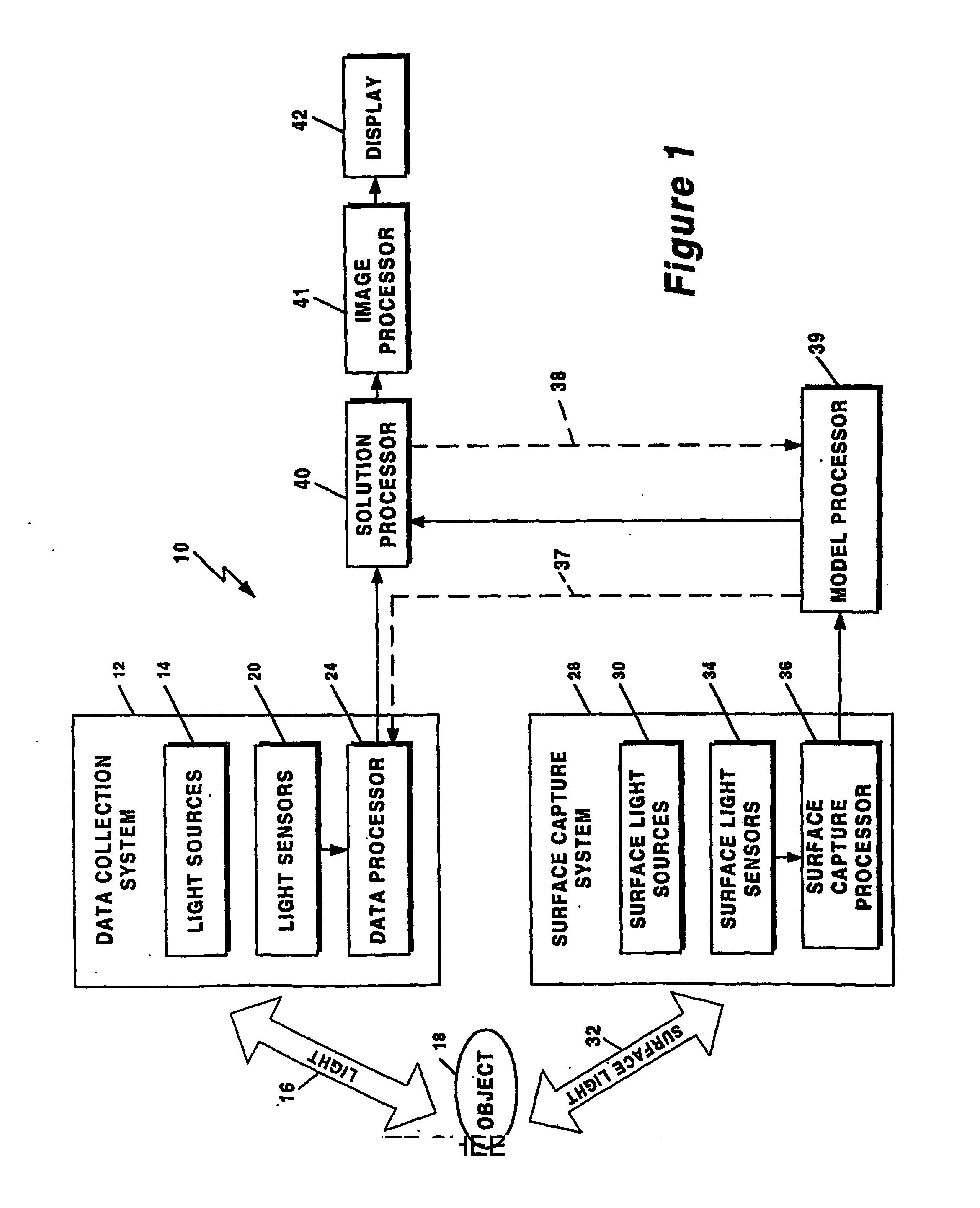Method and system for free space optical tomography of diffuse media
a diffuse medium and optical tomography technology, applied in the field of tomography, can solve the problems of reducing the versatility reducing the efficiency of direct contact systems, and absorbing light when passing through objects
- Summary
- Abstract
- Description
- Claims
- Application Information
AI Technical Summary
Benefits of technology
Problems solved by technology
Method used
Image
Examples
Embodiment Construction
[0039] Referring now to FIG. 1, an optical tomography system 10 includes a data collection system 12 having one or more light sources 14 spaced from an object 18 under test. Each of the one or more light sources 14 projects light 16 toward the object 18. Portions (not shown) of the light 16 which pass through the object 18 are received by one or more light sensors 20 which are disposed proximate, but spaced apart from, the object 18. It should be appreciated that sensors 20 are disposed about the object 20 such that the sensors 20 can receive light, which propagates through the object 18. In one particular exemplary embodiment, the light sensors 20 are disposed to be approximately one centimeter apart from the object 18, proximate a side of the object 18 which is substantially opposite from the side of the object upon which the light 16 is directed. However, in other embodiments, the one or more light sensors 20 can be disposed more that one centimeter or less than one centimeter ap...
PUM
 Login to View More
Login to View More Abstract
Description
Claims
Application Information
 Login to View More
Login to View More - R&D
- Intellectual Property
- Life Sciences
- Materials
- Tech Scout
- Unparalleled Data Quality
- Higher Quality Content
- 60% Fewer Hallucinations
Browse by: Latest US Patents, China's latest patents, Technical Efficacy Thesaurus, Application Domain, Technology Topic, Popular Technical Reports.
© 2025 PatSnap. All rights reserved.Legal|Privacy policy|Modern Slavery Act Transparency Statement|Sitemap|About US| Contact US: help@patsnap.com



